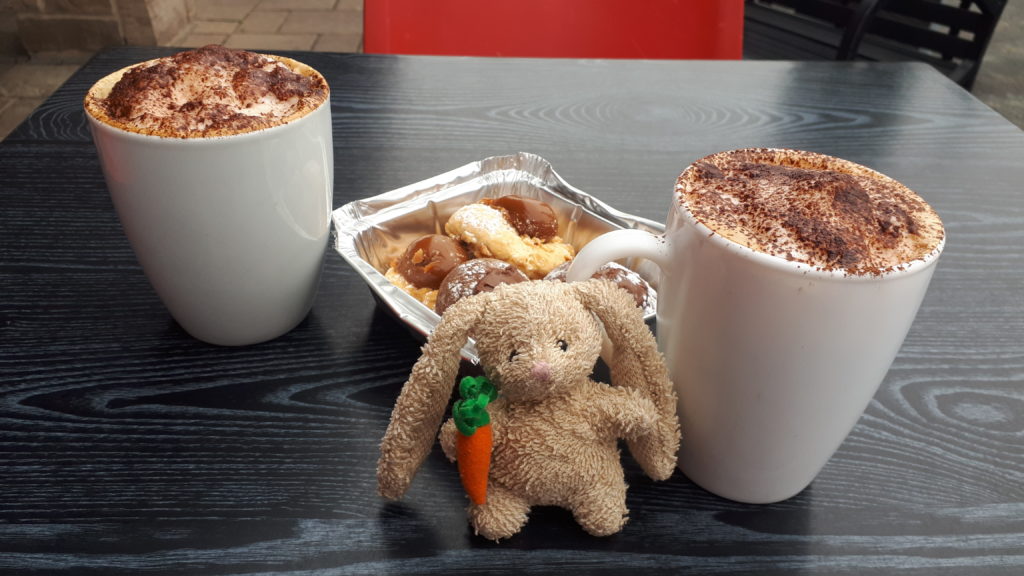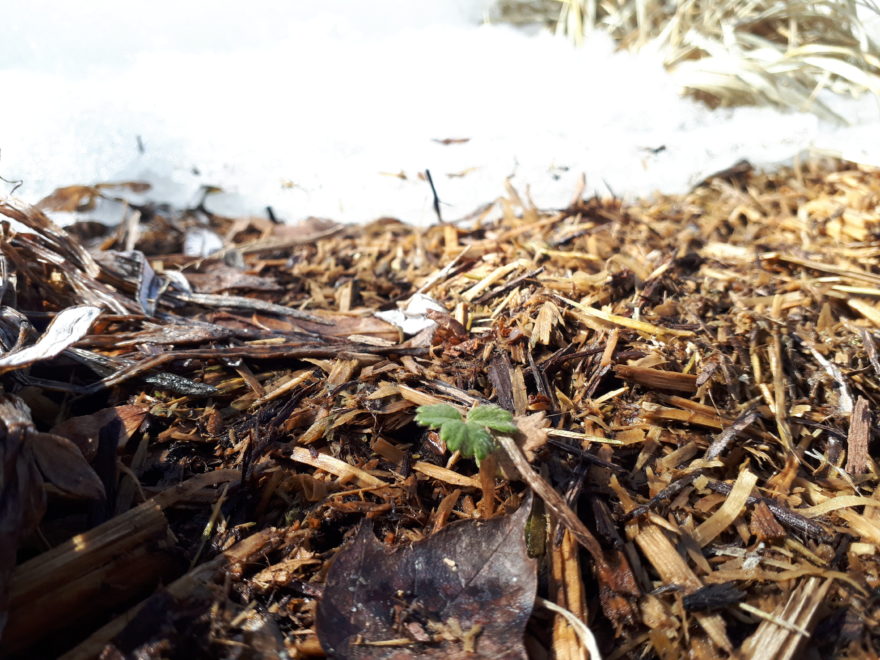I hope that you’re doing well, and adjusting to this strange new world in which we find ourselves. It’s important to respect public health recommendations for physical distancing, yet many of us crave human interaction during this pandemic period. We’re social creatures, and can still reach out to one another – at a distance.
Blogging is one of the ways in which I can reach out to people – to you – which has always been my reason for writing. Even if I can’t reach out and hug you from here, I am sending a BIG hug from me and Max; my little rare disease awareness buddy ‘-) Sweet treats always make Max feel better, so he’s even sharing some of his favourites cookies with you.

One of the things that Max misses most these days is being able to have cappuccino and cookies at some of our favourite local bakery-cafés. We’d stop in during long walks or bike rides, when the winter snow would have melted away. Or we’d drive in on our way back from physiotherapy or running errands.
We’d sit at a little coffee bar, or a small table on an outdoor patio, sometimes with my husband too ‘-) We’d enjoy chatting with the folks working there, and with strangers; others who’d also stopped in. It now seems as though that was a lifetime ago, those simple social interactions which would punctuate my days with greetings and smiles.
Sometimes a hug, because Montreal’s European flair has created an area in which it’s considered normal to greet someone with an air-kiss on each cheek and a hug. Each time I’d sit down with a coffee was an opportunity to meet someone new, and to share a few moments with them.
I find myself now often wondering about so many of the strangers with whom I’d strike up conversations. If there was an older person sitting alone, that’s who I’d walk over and say hello to. An excellent ice-breaker turned out to be: “Oh, that cookie looks good. Which kind is it, so I’ll know what to try next time I’m here?”
Many of them, I’d soon find out, lived by themselves. They’d come to sit at these little family-run bakeries to feel less alone, less isolated. The staff would get to know their names, their regular orders. When they stopped in, someone would greet them by name, and offer them a smile with their coffee or their cookie. Perhaps the only time that would happen for them, all day.
My provincial government has, quite correctly during pandemic conditions, shut down all seating areas in cafés and restaurants while permitting delivery and take-out services to continue. Also closed are pretty much all other places in which people might gather; community centres, gyms, libraries, seniors’ recreations centres, shopping malls, sporting venues…
Do these strangers with whom I’d chat have someone to talk with now? It’s recommended that everyone over seventy, or whose medical condition makes them vulnerable to complications from COVID-19, stay home.(1)
Our government recommends that they don’t leave the house, not even to get groceries or pick up medications; they’re being advised to have everything delivered to them, without opening the door until the person making the drop-off has left. Also to wipe down all packaging materials.
Do these older individuals have any social contact at all now? Is someone calling to check in on them on a daily basis, or even a few times a week? Do they have family or friends with whom they can connect on social media? Or are they all alone in the world, feeling completely isolated?
These are important questions, because research has shown that “loneliness and social isolation are associated with physical and cognitive decline in older adults.”(2) That means that social isolation has been shown to be harmful, particularly to people aged sixty-five and more.
Once this is all over, and the pandemic has ended, I’m making a resolution for myself. I’m going to ask each of these former strangers, truly hoping that they come through this unharmed, whether they had people in their lives with whom to connect during their self-quarantine.
For any who felt isolated, I’ll get some business cards printed up – showing my social media contact information. Instagram and Twitter, which allow for direct messaging. This blog, other networks.
There are a few former strangers with whom I’d also share my phone number and email address; Georgette, Henri, Julianne, and others whose names I can’t recall (blame my mild cognitive impairment for that!).
So that if ever something like this happens again, I can be a lifeline; someone to simply call in once every day or so, just to chat. Is there anyone who’d appreciate a call, email, or text from you today? Why not take this opportunity to reach out to them, right now.
And me? I’m doing well. After suddenly being placed on medical leave – wrenched away from a career that I loved and from colleagues who had become friends – at the end of 2018, I’d become accustomed to a certain level of isolation during working hours.
That medical leave is now considered to be permanent, as a result of mild cognitive impairment from my Complex Regional Pain Syndrome (CRPS). I now find myself giving advice and tips to friends who’ve suddenly found themselves at home, often alone, all day, for very different reasons.
In many ways, I’m luckier than most in this global situation of imposed isolation. I’ve gotten used to not having the multiple daily social interactions of a large open-concept work space within a large office building.
My husband’s office job switched to work-at-home this past Monday, due to the pandemic, so I’m no longer at home alone for twelve hours each weekday; he’d usually leave at about 0600 and be home just after 1800. This is a distinct improvement for me – despite the worries about family, friends, and health!
Finally, I’d lined up a variety of online activities and outreach, soon after I was placed on medical leave. From Twitter chats to direct messaging with online friends within my rare disease, chronic pain, and CRPS communities, I still feel connected to the outside world in a meaningful way. I’m still able to help fellow patients, and others, through these different means of communication.
I truly wish you all the best during these difficult times. I’ve sadly had to disable the comments feature here on the blog, due to obscene spam, so please feel free to reach out via Instagram or Twitter! My feeds are right here on the blog site; at the bottom if you’re reading on a small device, and on the right side it you’re using a personal computer.
Stay safe, keep well, and remember that we’re all in this together. Thanks so much for stopping by!
References
(1) Vulnerable populations and COVID-19. Government of Canada: Coronavirus disease (COVID-19). Online 22 Mar 2020. Accessed 22 Mar 2020:
https://www.canada.ca/en/public-health/services/publications/diseases-conditions/vulnerable-populations-covid-19.html
(2) Loneliness and social isolation among older adults in a community exercise program: a qualitative study. Hwang J, Wang L, Siever J, Medico TD, Jones CA. Aging Ment Health. Jun 2019. Volume 23, issue 6, pages 736-742. ePub 2018 Mar 15: doi: 10.1080/13607863.2018.1450835. Accessed 22 Mar 2020:
https://www.ncbi.nlm.nih.gov/pubmed/29543517

